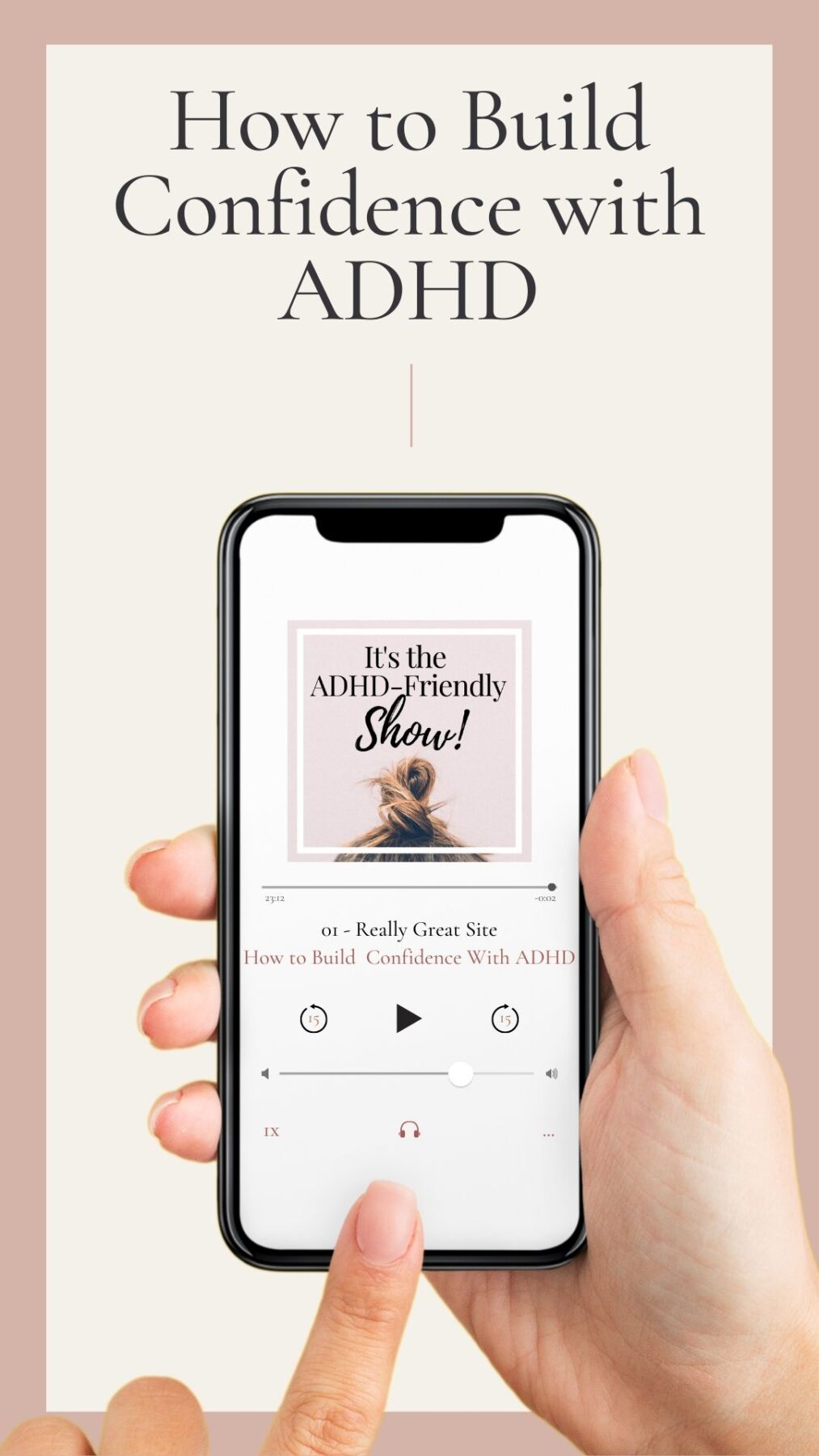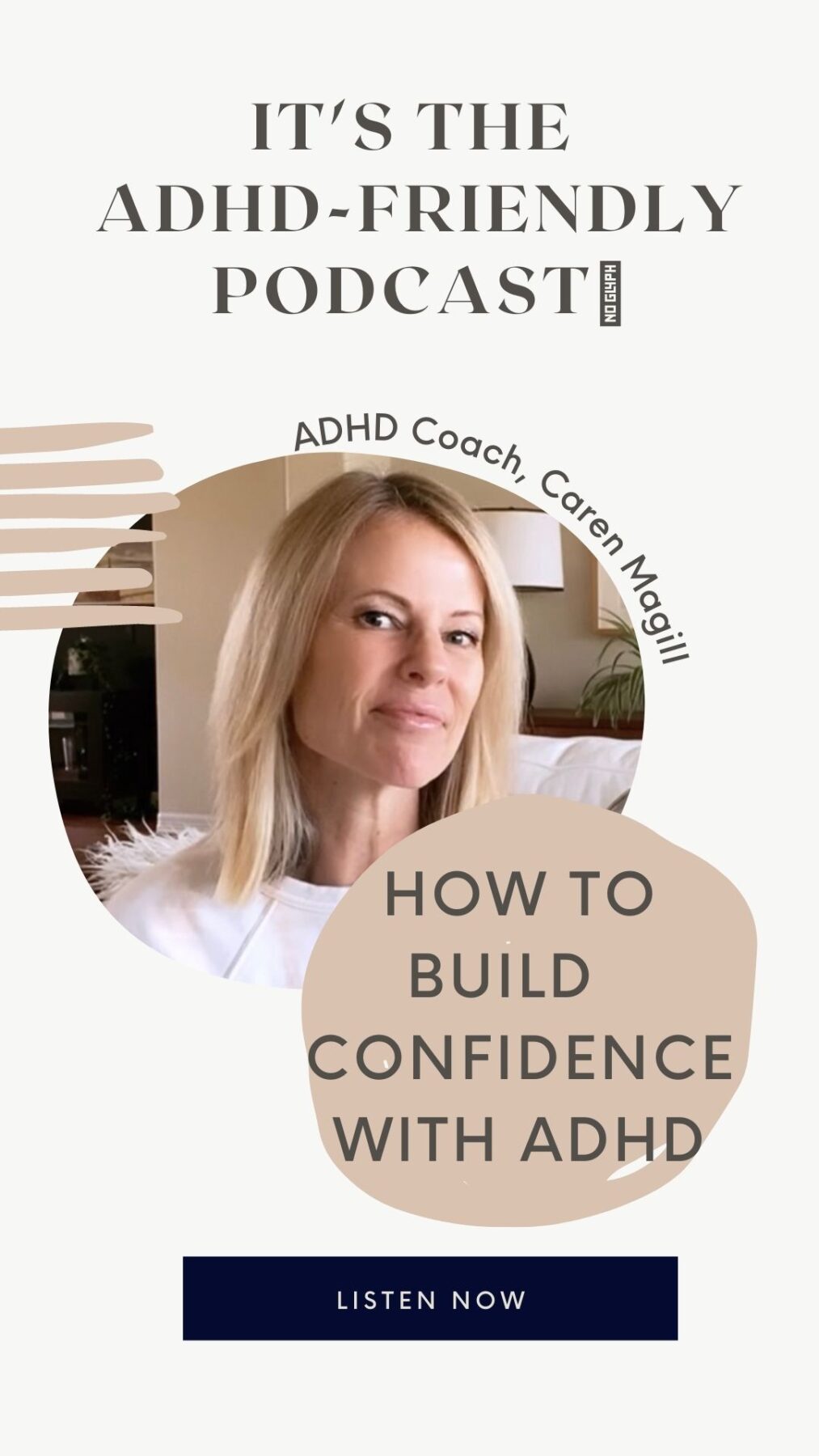Head's up, there could be affiliate links ahead!
Are you lacking confidence? Does it act as a barrier to getting what you want? Very often we desire to move ahead with a goal or a dream, but we’re paralyzed by fear. So instead of taking action, we focus on our lack of confidence and magnify that instead.
If that sounds familiar, then today’s podcast, will help you break through confidence barriers so that you can do and be exactly who you want.
Lacking Confidence in What, Exactly?
Start by getting clear on what you want, irrespective of the fears you have about moving forward. The trick is to acknowledge that fear is there, but rather than spending time denying that fear or fighting it, just accept that it’s there, but temporarily put it aside. Imagine putting it in a jar and closing the lid on it.
Be clear with your fear that you won’t do anything without it, but you just need a little time and space to think freely.
Priming Your Brain for Success
From a neuroscience perspective, your fear lives in the limbic area of your brain, and it’s there to help keep you safe. So every time you want to try something new that’s scary and has any amount of perceived risk, your amygdala and hypothalamus will immediately jump into action by highjacking your prefrontal cortex – the area of your brain in charge of reason, logic and planning.
Once the prefrontal cortex goes off line, you’re much less likely to think rationally, make plans or take any action. Instead, you’ll allow that limbic region to drive your decision-making, and as we know – it’s first motivation is to keep us safe. There’s no logic or ration involved. And, as you can probably imagine – there’s no sign of confidence there, either.
So hopefully you can now understand why it’s so important to put that fear in a jar, so you can leverage your rational, logical mind to create a plan that might be scary, but not life-threatening.
But how do you do that?
How to manage your mind and overcome your lack of confidence
To do this, you’ve got to gain access to your prefrontal cortex, because this is where you’re going to make rational, logical plans that will help you build your confidence muscle. And yes, your confidence lives in this area of the brain!
To bring this area of the mind back online and shift out of your limbic brain, you’ve got to get out of your head, and into your body so you can calm your nervous system. By managing your nervous system, you can manage which area of the brain is in charge. The limbic area or the prefrontal cortex area.
The best way to do this is with a mindfulness practice. That doesn’t have to mean meditation, but that’s a great option. So is tai chi, yoga, walking, emotional freedom technique, or simply tuning into your senses. Try feeling your feet on the ground, listening for the closest and furthest sounds and observing what’s in front of you.
Developing Confidence Building Behavior

Okay. So let’s assume now that you’re in a good place and your prefrontal cortex is back online.
Your fear is in the jar and you are able to just write freely from a place of confidence, because we’re not actually moving ahead with any of these brainstorming ideas yet. We’re just writing what we would do if we were able to jump that confidence barrier.
And I also invite you to split a page in half and on one side, write down all the things you want and what you could do to get it, that feels safe. And then another list that feels unsafe. This is a great way to engage your mind to create strategies that won’t feel so insurmountable. The key here is to find doable ways to get started, where you can give your confidence muscle a chance to build on itself without fear taking over.
Beat Your Lack of Confidence with Character Strengths
Once you’ve got some ideas on how you could possibly move forward, I recommend looking at your top character strengths to see how you might leverage them to build more confidence toward the outcome you desire.
Your character strengths are essentially the way that you show up as your very best. The Via cCharacter Strengths Assessment is based on extensive research out of Penn State University, spearheaded by Martin Seligman, who is known as the father of the positive psychology movement.
If you don’t yet know your character strengths, I recommend you set aside 20 minutes to take the free assessment and understand what they area.
Once you have this information, brainstorm ideas for moving forward with your goal that leverages those strengths.
For example, my top 3 strengths are love of learning, gratitude and hope. If I were to embark on something new where I had zero confidence, I might ask myself – how can I use gratitude to see this differently? Can I use my love of learning to embrace what I don’t know as a challenge and an opportunity to learn something new?
When you incorporate your top strengths into your approach, you will naturally show up with a greater sense of confidence because you’re leaning on your natural abilities and showing up as your authentic self. And when you do that, you’re less likely to operate from a place of fear (which as you know, wakes up that pesky limbic system).
True Confidence is Found in the Doing
At this point, you’ve brainstormed ways to go after what you want that feel safe and doable and you’ve incorporated your character strengths. Now you just have to do the thing. You can only prepare so much, and while that feels a lot safer than putting yourself out there, ultimately, you’ve got to do just that.
The good news is that, as long as you are not conducting brain surgery on people without medical training, you can move forward in a way that’s safe. You can make small steps, gain small momentum, and no matter how small it is, is going to start building that confidence muscle.
The GREAT news, is that once you get to the other side of the doing part, it’s not as scary anymore. And every time you push through fear and get to the other side, you realize that you can do hard things. Because you now have evidence-based confidence.
Building Confidence is How we Grow

It’s also how we get what we want. No matter how scary it feels. So final thoughts here as I wrap up:
- When we’re in fear, we don’t have access to the prefrontal cortex. If you have ADHD, you are already somewhat challenged with accessing your prefrontal cortex, that makes things extra tricky. So it’s really important for those of us, with ADHD to constantly check in and be aware of the state we’re in so that we can keep the prefrontal cortex online.
- It’s also a reminder to manage your mind in order to live an authentic life. When you are willing to be who you are and show up for what you want and not let that limbic brain take over, you are able to stay in your prefrontal cortex area of the brain, where your decisions are, more authentic and, aligned to what we truly want.





Leave a Comment